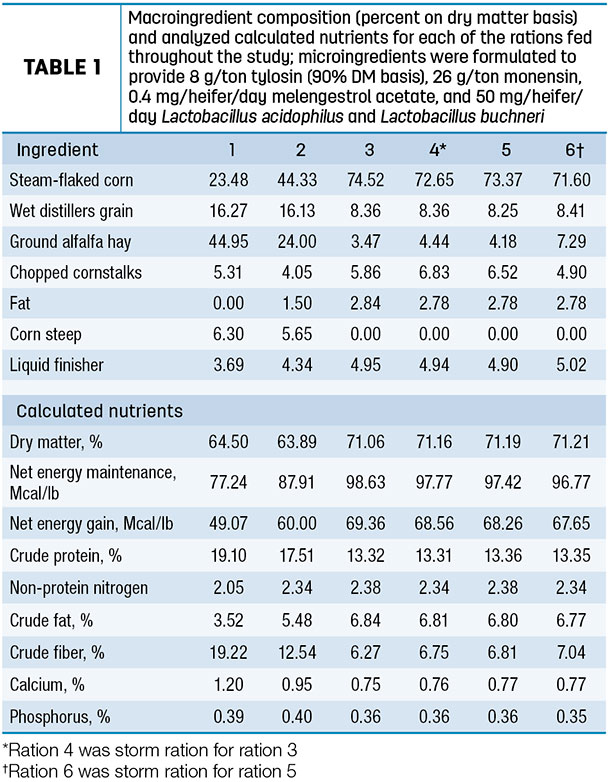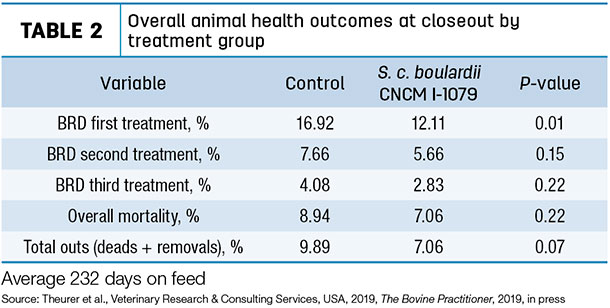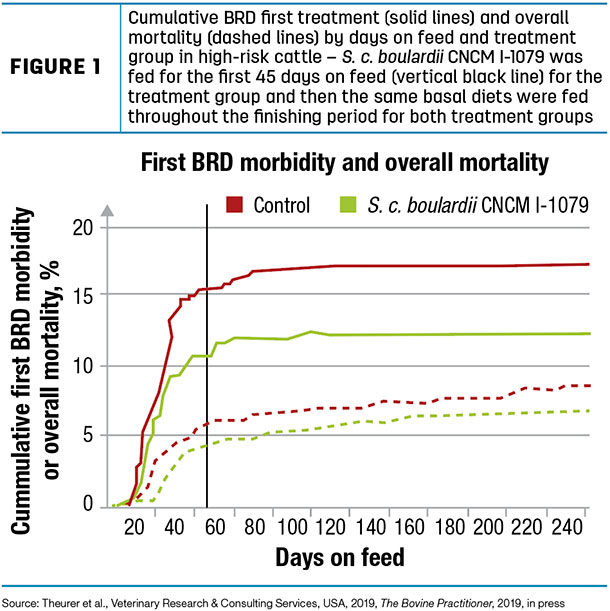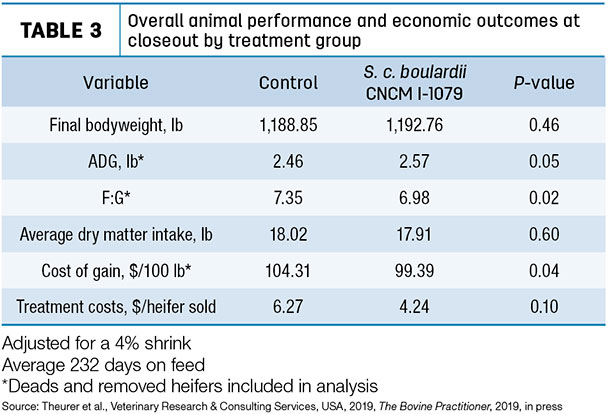Using direct-fed microbials or probiotics to manage gut health is a proactive way to positively impact the immune system and manage and support gut health as cattle adjust to the feedyard.
These proactive feed additive products have been in the market for over 15 years, and more investment in research and data has been made over the years. Within the probiotic category, active dry yeasts have been shown to promote feed intake and have positive effects on health outcomes. An example of one such probiotic yeast is Saccharomyces cerevisiae boulardii CNCM I-1079.
Learn more about S. c. boulardii CNCM I-1079
- What is it? An active dry yeast probiotic feed additive, Saccharomyces cerevisiae boulardii strain CNCM I-1079
- Why would I feed this probiotic? Specifically selected by Lallemand experts, S. c. boulardii CNCM I-1079 helps balance the microbiota in the lower gut, supports the gut integrity and strengthens the natural defenses of the animal. Beef cattle producers who feed this probiotic often see cattle get to the feedbunk more quickly, stay healthy and have improved performance and lower cost of gain.
- Can I feed S. c. boulardii CNCM I-1079 to the same cattle multiple times? Yes, it is a safe and all-natural feed additive, so stressed cattle can be fed S. c. boulardii CNCM I-1079 for as long, and as often, as the producer and his or her veterinarian deem necessary.
- Can I incorporate this probiotic into the diet if I use antibiotics? Yes, S. c. boulardii CNCM I-1079 can be fed to cattle in conjunction with injectable or in-feed antibiotic programs.
Proven probiotic
A recent Kansas feedyard study using 16 large pens, ranging from 80 to 100 head per pen, evaluated a probiotic yeast’s impact when fed to cattle procured from regional sale barns. A total of 1,274 heifers (average weight of 547 pounds) were purchased in September and October of 2018 with unknown health, vaccinations and nutrition history. Heifers were randomly assigned to one of two treatment groups:
1. Control (no yeast products provided)
2. S. c. boulardii CNCM I-1079 fed at 20 x 109 colony-forming units (CFU) per head per day for the first 45 days on feed (DOF).
After 45 DOF, S. c. boulardii CNCM I-1079 was removed from the treatment ration and, for the balance of the trial, both control and treatment groups were fed the same rations. All cattle were treated the same for vaccination, antibiotic therapy and implant program. A seven-day post-metaphylaxis interval was used following administration of tulathromycin during processing where cattle were not eligible for BRD treatment. Animal health was evaluated by pen riders daily who were blinded to treatment group throughout the study.
Heifers were fed diets formulated to meet or exceed requirements for feedyard cattle (Table 1).

Heifers were fed twice daily throughout the study; diets included monensin and tylosin. No additional feed-grade antibiotics were fed throughout the trial. Melengestrol acetate was also included in the finish ration. Ractopamine hydrochloride with a 300-milligram-per-head-per-day target was included in the diet when heifers were estimated to be 30 days from harvest.
The health results of the study showed the percent of calves which required treatment for bovine respiratory disease (BRD) was significantly reduced for the treatment group compared to the controls. This effect was observed to be significant throughout the entirety of the trial (P less than 0.01).
There was numerical reduction in overall mortality in the S. c. boulardii CNCM I-1079 group compared to the control group (Table 2, P equal to 0.22).

Total outs (deads and animals unable to finish the trial) tended to be less in the treatment group (P equal to 0.07) at harvest. The overall mortality and morbidity from BRD shown in Figure 1 for the entire trial tells the story that is commonly seen with high-stressed calves, but yet with the addition of the probiotic, the resulting positive effects should be noted.

The probiotic-fed cattle showed an overall significant increase in average daily gain (ADG) (P equal to 0.05) as well as feed conversion (P equal to 0.02). As a result of this improvement in performance, the final cost of gain (P equal to 0.04) was also improved in the S. c. boulardii CNCM I-1079 treatment group compared to the control group evaluated on a deads-in basis. There were minimal differences in dry matter intake (DMI) between treatment groups throughout the study, which supports the improved feed conversion observed for the probiotic treatment group (Table 3).

Bolstering health for added profitability
In summary, this trial illustrated the effectiveness of an active dry yeast probiotic in helping alleviate both health and growth performance challenges often observed when feeding newly received calves. A 28% reduction in first pulls for BRD was observed for the S. c. boulardii CNCM I-1079-fed group, resulting in treatment cost being reduced by $2.03 per head. This impact on improved animal health translates into improvements in animal ADG and feed conversion. However, the most important metric used to measure success when feeding cattle is whether cost of gain was improved.
In this trial, which was conducted in Kansas during peak seasonal time of the year for high-risk cattle flowing into the feedyards, in conjunction with these cattle scheduled to be also long-fed cattle (on feed for an average of 232 days), cost of gain was found to be significantly reduced for the treatment group ($4.92 per hundredweight). Ensuring cattle health and profitability is difficult, especially when working with high-stressed calves. Using progressive technologies such as S. c. boulardii CNCM I-1079 could bring significant advantage to any nutrition and animal health program to drive profitability. ![]()
Kip Karges received his Ph.D. in animal sciences from Oklahoma State University and is employed by Lallemand Animal Nutrition, North America as a technical services – ruminant team member, since 2019.

-
Kip Karges
- Technical Services – Ruminant
- Lallemand Animal Nutrition, North America






